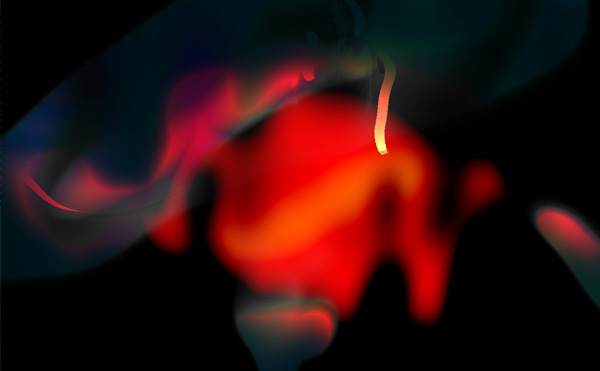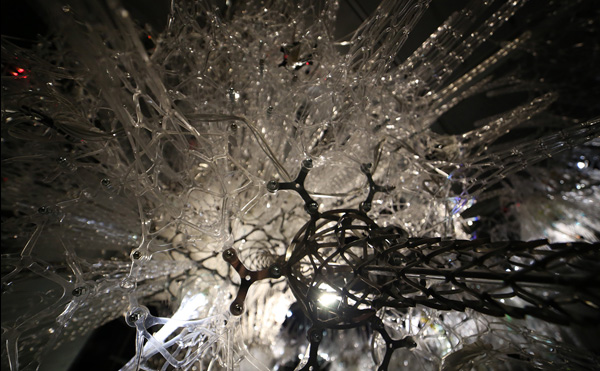Philip Beesley
Philip Beesley is a practicing visual artist, architect, and Professor in Architecture at the University of Waterloo and Professor of Digital Design and Architecture & Urbanism at the European Graduate School. Beesley's work is widely cited in contemporary art and architecture, focused in the rapidly expanding technology and culture of responsive and interactive systems.
Beesley was educated in visual art at Queen's University, in technology at Humber College, and in architecture at the University of Toronto. He serves as the Director for the Living Architecture Systems Group, and as Director for Riverside Architectural Press. His Toronto-based practice, Philip Beesley Architect Inc., operates in partnership with Rolf Seifert and the Waterloo-based Adaptive Systems Group, and in numerous collaborations including long standing exchanges with couture designer Iris van Herpen and futurist Rachel Armstrong. PBAI/PS combine the disciplines of professional architecture, science, engineering, and visual art. The studio's methods incorporate industrial design, digital prototyping, instrument making, and mechatronics engineering. Beesley has authored and edited sixteen books and proceedings, and has appeared on the cover of Artificial Life (MIT), LEONARDO and AD journals. Features include national CBC news, Vogue, WIRED, and a series of TED talks. His work was selected to represent Canada at the 2010 Venice Biennale for Architecture, and has received distinctions including the Prix de Rome, VIDA 11.0, FEIDAD, Azure AZ, and Architizer A+. Beesley's work is supported by partnerships and by SSHRC, NSERC and Canadian arts and technology funding.
His research focuses on responsive and distributed architectural environments and interactive systems, flexible lightweight structures integrating kinetic functions, microprocessing, sensor and actuator systems, with particular focus on digital fabrication methods and sheet-material derivations. Comprehensive architectural design and professional practice; textile structures; material crafts and fabrication; organicism and design integrated with nature; hybrid forms of nature; chemical metabolisms; field relationships; emotion, romanticism and 20th century spiritualism as alternate qualities in Modernism; alterity and dissociation; chthonian and expanded definitions of space; the archaic, genesis, futures.
Links:
http://philipbeesleyarchitect.com/
http://www.livingarchitecturesystems.com
 AEGIS | NOOSPHERE (2018)
AEGIS | NOOSPHERE (2018)  Amatria (2018)
Amatria (2018)  'Integrating Sound in Living Architecture Systems' Poul Holleman (2018)
'Integrating Sound in Living Architecture Systems' Poul Holleman (2018)  Sound Holograms’- Salvador Breed, Max Cooper, Philip Beesley (2013)
Sound Holograms’- Salvador Breed, Max Cooper, Philip Beesley (2013) Astrocyte (2017) [PROJECTS]
Astrocyte (2017) [PROJECTS]